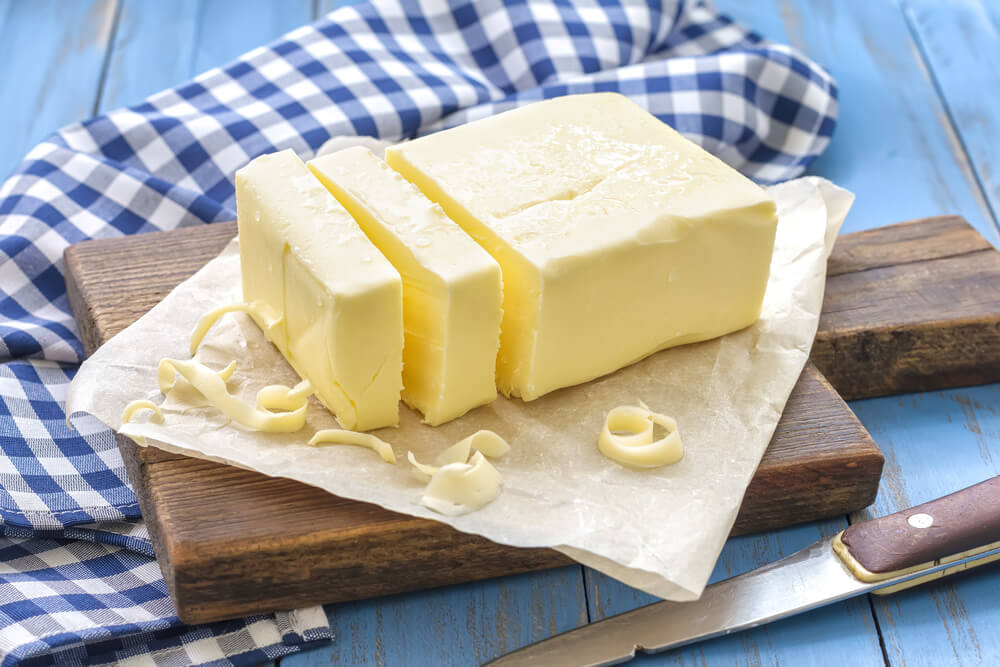Have you ever wondered if there's a way to enjoy butter without the discomfort of lactose intolerance? For those who experience digestive issues after consuming dairy products, finding suitable alternatives can be a game-changer. In this article, we will delve into the world of lactose-free butter options, exploring their benefits, availability, and how they can be a game-changer for individuals with lactose intolerance.
Table of Contents
What is Lactose?
Before diving into the world of lactose-free butter, let's understand what lactose actually is. Lactose is a sugar found in milk and dairy products. It is made up of two smaller sugar molecules called glucose and galactose. Our bodies normally produce an enzyme called lactase, which breaks down lactose into these smaller sugars, allowing us to digest and absorb them.
However, some individuals have a reduced ability to produce lactase, leading to lactose intolerance. When lactose is not properly digested, it can cause uncomfortable symptoms such as bloating, gas, diarrhea, and stomach cramps. For those with lactose intolerance, finding alternatives that don't trigger these symptoms becomes crucial for their overall well-being.
Now that we have a basic understanding of lactose and lactose intolerance, let's explore the possibilities of lactose-free butter and how it can be a game-changer for individuals with lactose intolerance.
Also Like: Exploring the 20 Surprising Health Benefits Nance Fruit
What Is Lactose-Free Butter?
Lactose-free butter is a dairy product made specifically for individuals who are lactose intolerant. It is created by removing or breaking down the lactose found in regular butter.
Lactose-free butter offers a suitable alternative for those with lactose intolerance who still want to enjoy the rich flavor and creamy texture of butter without experiencing digestive issues. It allows individuals to enhance the taste of various dishes, including baked goods, sauces, and spreads, without compromising on flavor or texture. Plus, lactose-free butter provides a source of essential nutrients like vitamins A, D, E, and K.
How Is Lactose-Free Butter Made?
Lactose-free butter can be made using various methods, each with its own advantages and considerations. One common method involves adding lactase, an enzyme that breaks down lactose, to regular butter. This process helps make the butter more digestible for individuals with lactose intolerance.
Another method involves clarifying regular butter to remove the milk solids that contain lactose, leaving behind the clarified butter. This clarified butter, also known as ghee, has a rich, nutty flavor and is naturally lactose-free. Clarified lactose-free butter can be used in cooking and baking, just like regular butter.
In addition to these methods, there are also lactose-free butter alternatives available. These alternatives are made using non-dairy fats, such as vegetable oils or plant-based butters. While they may not have the exact same taste and texture as traditional butter, they can still be suitable options for those with lactose intolerance.
Availability of Lactose-Free Butter
The good news is that lactose-free butter is becoming increasingly available in supermarkets and specialty stores. Many well-known butter brands now offer lactose-free options, making it easier than ever for individuals with lactose intolerance to find suitable alternatives.
If you prefer a homemade approach, you can also make lactose-free butter at home. This can be done by adding lactase drops to regular butter or by clarifying it yourself. By following these methods, you can create your own lactose-free butter and have control over the ingredients used.
When purchasing lactose-free butter, it's important to read product labels and certifications to ensure the butter is truly lactose-free. Some products may still contain traces of lactose, so it's crucial to choose trusted brands that prioritize the needs of individuals with lactose intolerance.
Tips for Using Lactose-Free Butter
Once you have your lactose-free butter in hand, here are some tips on how to make the most of it in your cooking and baking:
- Substitute lactose-free butter in equal amounts for regular butter in recipes. This will ensure that the taste and texture of your dishes remain consistent.
- Use lactose-free butter as a spread, on toast, bread, or pancakes. It adds a rich and creamy flavor that can elevate your breakfast or snack.
- Incorporate lactose-free butter in sauces, soups, and sautéing for added flavor and richness. It can be a delicious addition to enhance the taste of your favorite dishes.
Frequently Asked Questions About Lactose-Free Butter
-
Can lactose-free butter be used by individuals with dairy allergies?
Lactose intolerance and dairy allergies are not the same. Lactose intolerance is the inability to digest lactose, while dairy allergies involve an immune response to proteins found in dairy products. Lactose-free butter may still contain traces of dairy proteins and is not suitable for those with dairy allergies. It's best to consult with a healthcare professional for suitable alternatives.
2. Is lactose-free butter suitable for vegans?
Lactose-free butter is derived from dairy sources, so it may not be suitable for vegans. However, there are plant-based butter alternatives available that are specifically made for vegans. These alternatives are created using non-dairy fats and can be a suitable choice for individuals following a vegan lifestyle.
3. Do lactose-free butter alternatives have the same nutritional value as regular butter?
Lactose-free butter alternatives may have a slightly different nutritional profile compared to regular butter. However, they can still provide a source of essential nutrients like vitamins A, D, E, and K. It's important to check the nutritional labels of different lactose-free butter options to make an informed choice.
Conclusion
Finding a butter that is lactose-free can be a game-changer for individuals with lactose intolerance. Lactose-free butter allows them to enjoy the taste and texture of butter without experiencing digestive discomfort. With the increasing availability of lactose-free butter in supermarkets and specialty stores, it has become easier than ever to find suitable alternatives.
Whether you choose a lactase-treated butter, clarified lactose-free butter, or a non-dairy butter alternative, there are plenty of options to explore. By incorporating lactose-free butter into your cooking and baking, you can still enjoy the rich flavor and creamy texture that butter brings to dishes. So, why not give lactose-free butter a try and elevate your culinary creations while keeping your stomach happy?
Must Read: 18 Delicious Oatmeal Alternatives: Find Health and Variety in Your Breakfast


